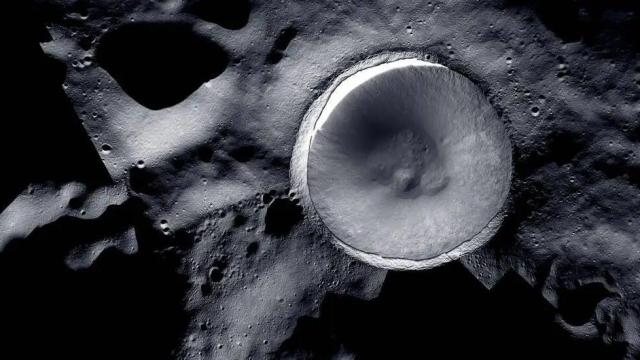China is planning to send its next lander to the lunar surface, this time targeting an impact crater with a sun-lit rim that could hold precious resources for long-duration stays on the Moon.
The upcoming Chang’e 7 mission, scheduled for launch in 2026, is targeting a landing site on the Shackleton crater in the Moon’s south pole, according to a recent paper published in National Science Review. The lander, along with a rover and a small flying probe (likely a hopping probe), aim to touchdown on the crater’s illuminated rim. NASA is also eyeing the highly coveted area for its future Artemis missions as the ideal spot to build a lunar base camp.
Shackleton crater lies in the lunar south pole. The impact crater is outlined by an illuminated rim that enjoys the sunlight while its interior is in perpetual darkness, according to NASA. Unlike Earth, the Moon is only slightly tilted on its axis, which means that the Sun never fully rises or sets over the horizon in the south pole. As a result, three points on Shackleton crater’s rim remain sunlit for 90% of the year.
That makes it ideal for future Moon missions whereby astronauts can benefit from the sunlit areas to harness solar power while also exploring the permanently shadowed region of the crater for water ice.
China’s Chang’e 7 mission will carry a ground penetrating radar to the Moon to search for traces of water ice and other natural resources at the south pole. “The Moon’s south pole is likely to have a favourable solar illumination condition that means sustained power supply and stable temperatures, and those will allow for long-term robotic exploration and [crewed] activities,” Wu Weiren, chief designer of China’s lunar exploration program, said in a statement. By comparison, other places on the Moon have shorter periods of sunlight and a more severe change in temperature between lunar day and night, he added.
With NASA and China both hoping to establish a sustainable presence on the Moon, the South Pole is a major hot spot. In August 2022, NASA announced 13 candidate landing regions near the Moon’s south pole for the upcoming Artemis 3 mission, eyeing areas around Shackleton, Haworth and Nobile craters as potential landing zones for its astronauts. The Artemis 3 mission was originally scheduled to return humans to the lunar surface in 2025, but it was recently delayed to September 2026.
The delay raised concerns that China might catch up with NASA’s lunar program. China is targeting a 2030 Moon landing for its astronauts. Although it has made a lot of headway with its space program, it’s not clear whether a crewed landing on the Moon will be possible by then; it still needs to develop a rocket to launch the crewed spacecraft to the Moon, in addition to building a lunar lander.
In 2020, China’s Chang’e 5 mission made history by bringing lunar samples to Earth for the first time in more than 40 years, and its successor Chang’e 6 is scheduled to launch in 2025 to collect a second batch of lunar samples from the Moon’s far side.
